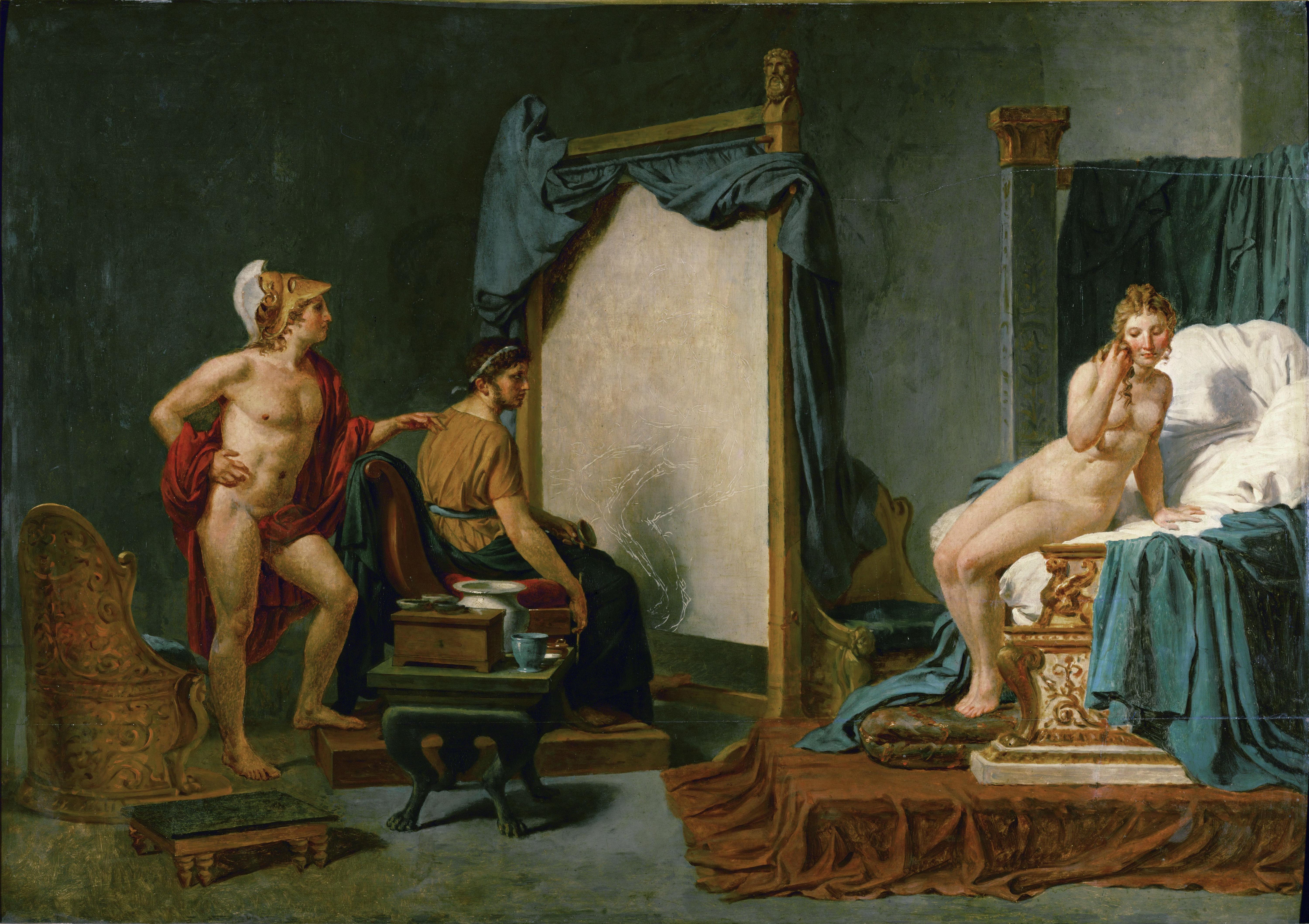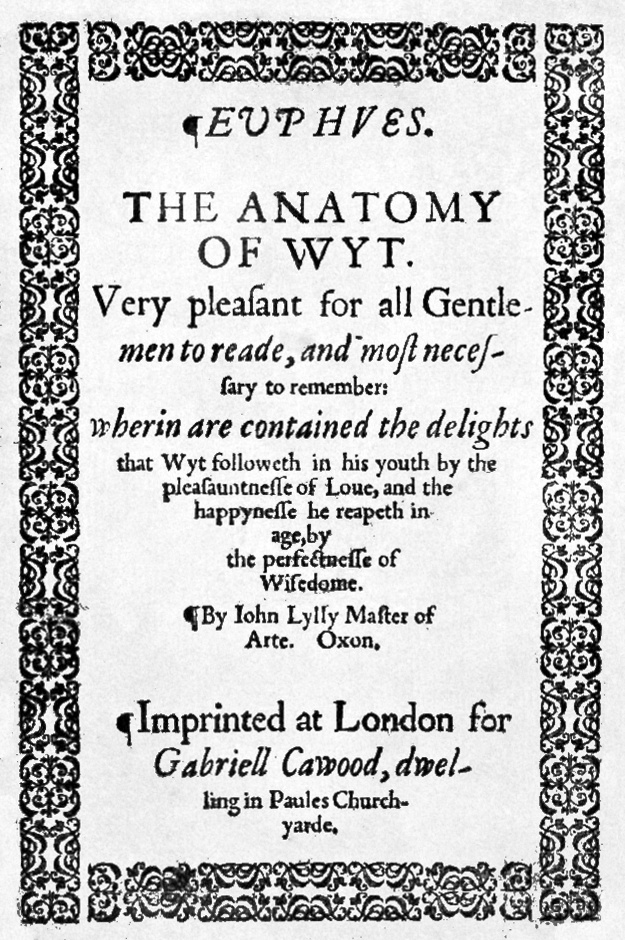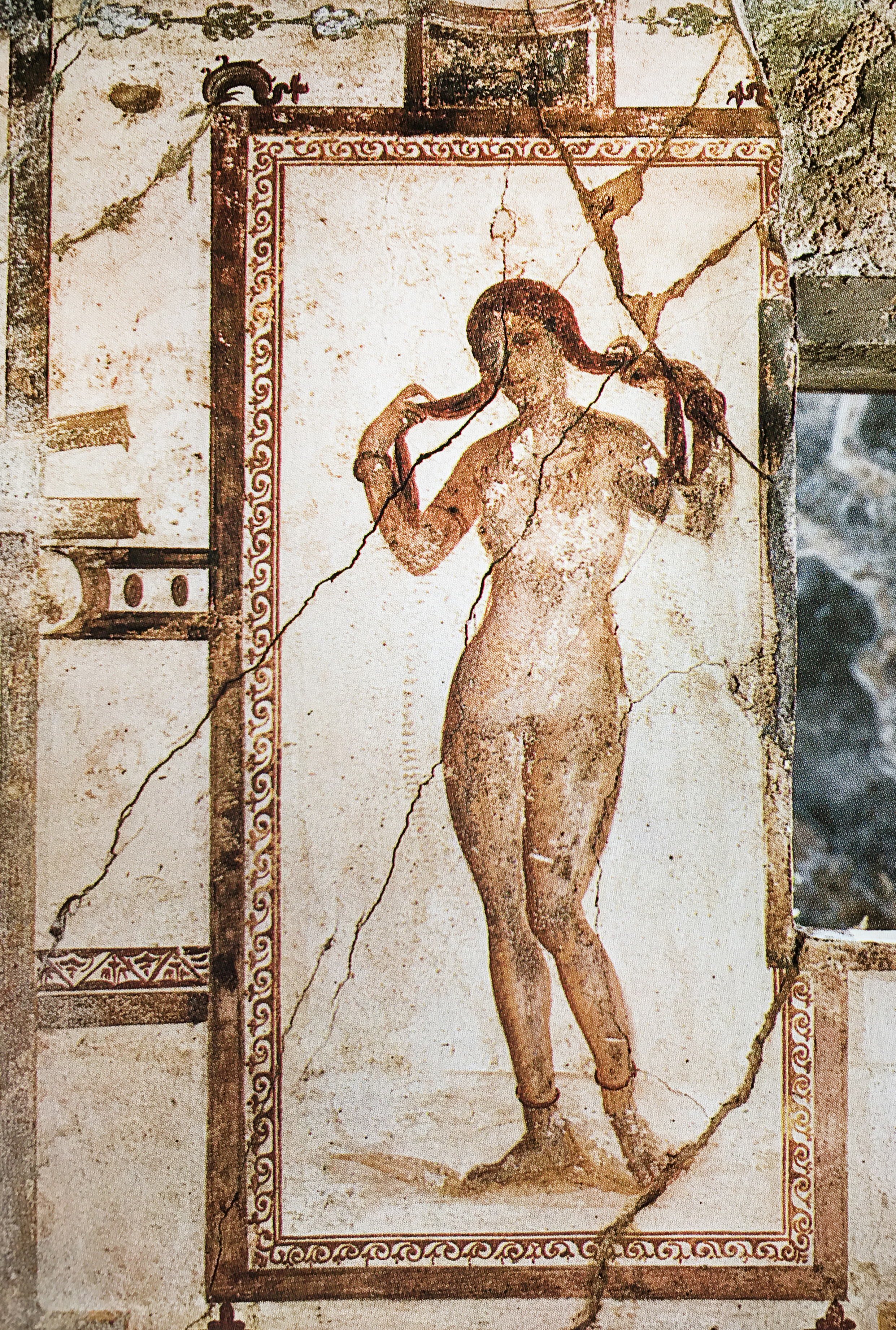|
Campaspe
Campaspe (; Greek: Καμπάσπη, ''Kampaspē''), or Pancaste (; Greek: Πανκάστη, ''Pankastē''; also ''Pakate''), was a supposed mistress of Alexander the Great and a prominent citizen of Larissa in Thessaly. No Campaspe appears in the five major sources for the life of Alexander and the story may be apocryphal. The biographer Robin Lane Fox traces her legend back to the Roman authors Pliny (Natural History), Lucian of Samosata and Aelian's ''Varia Historia''. Aelian surmised that she initiated the young Alexander in love. According to tradition, she was painted by Apelles, who had the reputation in antiquity for being the greatest of painters. The episode occasioned an apocryphal exchange that was reported in ''Pliny's Natural History'': "Seeing the beauty of the nude portrait, Alexander saw that the artist appreciated Campaspe (and loved her) more than he. And so Alexander kept the portrait, but presented Campaspe to Apelles." Fox describes this bequest as "the m ... [...More Info...] [...Related Items...] OR: [Wikipedia] [Google] [Baidu] |
Campaspe River
The Campaspe River, an inland intermittent river of the northcentral catchment, part of the Murray-Darling basin, is located in the lower Riverina bioregion and Central Highlands and Wimmera regions of the Australian state of Victoria. The headwaters of the Campaspe River rise on the northern slopes of the Great Dividing Range and descend to flow north into the Murray River, Australia's longest river, near Echuca. Location and features From its source in the foothills of the Great Dividing Range below Red Hill, the Campaspe River rises in the Wombat State Forest northwest of and southwest of near and Firth Park, a local camping ground and historical area. The river then flows west of the township of and continues north through the town of . The middle reaches of the river are dominated by Lake Eppalock, a constructed reservoir. The Coliban River, the most significant tributary of the Campaspe, also flows into Lake Eppalock. Towns located on the river in this area i ... [...More Info...] [...Related Items...] OR: [Wikipedia] [Google] [Baidu] |
Campaspe (play)
''Campaspe'' is an Elizabethan era stage play, a comedy by John Lyly based on the life of Campaspe. Widely considered Lyly's earliest drama, ''Campaspe'' was an influence and a precedent for much that followed in English Renaissance drama. Performance and publication ''Campaspe'' is known to have been performed at Court before Queen Elizabeth I, most likely on 1 January 1584 (new style); it was also acted at the first Blackfriars Theatre. The company that performed the play is open to question: extant records assign the Court performance to "Oxford's boys," and the Blackfriars production to the Children of Paul's, Lyly's regular company, and the Children of the Chapel. One resolution for the conflicting assignments is the theory that the play was acted by a combination of personnel from the Paul's and Chapel companies as well as from the troupe of boy actors maintained in the 1580s by the Earl of Oxford. ''Campaspe'' was first published in a 1584 quarto printed by Thomas ... [...More Info...] [...Related Items...] OR: [Wikipedia] [Google] [Baidu] |
Campaspe Ottin Cour Carree Louvre
Campaspe (; Greek: Καμπάσπη, ''Kampaspē''), or Pancaste (; Greek: Πανκάστη, ''Pankastē''; also ''Pakate''), was a supposed mistress of Alexander the Great and a prominent citizen of Larissa in Thessaly. No Campaspe appears in the five major sources for the life of Alexander and the story may be apocryphal. The biographer Robin Lane Fox traces her legend back to the Roman authors Pliny (Natural History), Lucian of Samosata and Aelian's ''Varia Historia''. Aelian surmised that she initiated the young Alexander in love. According to tradition, she was painted by Apelles, who had the reputation in antiquity for being the greatest of painters. The episode occasioned an apocryphal exchange that was reported in ''Pliny's Natural History'': "Seeing the beauty of the nude portrait, Alexander saw that the artist appreciated Campaspe (and loved her) more than he. And so Alexander kept the portrait, but presented Campaspe to Apelles." Fox describes this bequest as "the ... [...More Info...] [...Related Items...] OR: [Wikipedia] [Google] [Baidu] |
Shire Of Campaspe
The Shire of Campaspe is a local government area in Victoria, Australia, located in the northern part of the state. It covers an area of and in June 2018 had a population of 37,592. It includes the towns of Girgarre, Echuca, Kyabram, Rochester, Tongala and Rushworth. It was formed in 1995 from the amalgamation of the City of Echuca, Shire of Deakin, Shire of Rochester, Shire of Waranga, Town of Kyabram and part of the Shire of Rodney. The Shire is governed and administered by the Campaspe Shire Council; its seat of local government and administrative centre is located at the council headquarters in Echuca, it also has service centres located in Kyabram, Rochester, Rushworth and Tongala. The Shire is named after the Campaspe River, a major geographical feature that meanders through the LGA. Council Current composition The council is composed of five wards and nine councillors, with three councillors per ward elected to represent each of the Echuca and Kyabram-Dea ... [...More Info...] [...Related Items...] OR: [Wikipedia] [Google] [Baidu] |
John Lyly
John Lyly (; c. 1553 or 1554 – November 1606; also spelled ''Lilly'', ''Lylie'', ''Lylly'') was an English writer, dramatist of the University Wits, courtier, and parliamentarian. He was best known during his lifetime for his two books '' Euphues: The Anatomy of Wit'' (1578) and its sequel ''Euphues and His England'' (1580), but perhaps best remembered now for his plays. Lyly's distinctive and much imitated literary style, named after the title character of his two books, is known as '' euphuism''. Biography John Lyly was born in Kent, England, in 1553/1554, the eldest son of Peter Lyly and his wife, Jane Burgh (or Brough), of Burgh Hall in the North Riding of Yorkshire. He was probably born either in Rochester, where his father is recorded as a notary public in 1550, or in Canterbury, where his father was the Registrar for the Archbishop Matthew Parker and where the births of his siblings are recorded between 1562 and 1568. His grandfather was William Lily, the grammar ... [...More Info...] [...Related Items...] OR: [Wikipedia] [Google] [Baidu] |
Campaspe River (Queensland)
The Campaspe River is a long tributary of Cape River in Queensland, Australia near Charters Towers. It rises at Homestead and flows southeasterly through Pentland to Campaspe where it joins the Cape River. Tributaries includes Homestead Creek, Balfe Creek and Policeman Creek. There are no major settlements along its course. The river is crossed by the Flinders Highway. Its catchment area remains undeveloped. See also * List of rivers of Queensland This is a list of rivers of Australia. Rivers are ordered alphabetically, by state. The same river may be found in more than one state as many rivers cross state borders. Longest rivers nationally Longest river by state or territory Althoug ... References Rivers of Queensland Charters Towers North Queensland {{Queensland-river-stub ... [...More Info...] [...Related Items...] OR: [Wikipedia] [Google] [Baidu] |
Apelles
Apelles of Kos (; grc-gre, Ἀπελλῆς; fl. 4th century BC) was a renowned painter of ancient Greece. Pliny the Elder, to whom much of modern scholars' knowledge of this artist is owed ('' Naturalis Historia'' 35.36.79–97 and ''passim''), rated him superior to preceding and subsequent artists. He dated Apelles to the 112th Olympiad (332–329 BC), possibly because he had produced a portrait of Alexander the Great. Biography Probably born at Colophon in Ionia, he first studied under Ephorus of Ephesus, but after he had attained some celebrity he became a student to Pamphilus at Sicyon He thus combined the Dorian thoroughness with the Ionic grace. Attracted to the court of Philip II, he painted him and the young Alexander with such success that he became the recognized court painter of Macedon, and his picture of Alexander holding a thunderbolt ranked in the minds of many with the Alexander with the spear of the sculptor Lysippus. Hundreds of years later, Pl ... [...More Info...] [...Related Items...] OR: [Wikipedia] [Google] [Baidu] |
Larissa
Larissa (; el, Λάρισα, , ) is the capital and largest city of the Thessaly region in Greece. It is the fifth-most populous city in Greece with a population of 144,651 according to the 2011 census. It is also capital of the Larissa regional unit. It is a principal agricultural centre and a national transport hub, linked by road and rail with the port of Volos, the cities of Thessaloniki and Athens. The municipality of Larissa has 162,591 inhabitants, while the regional unit of Larissa reached a population of 284,325 (). Legend has it that Achilles was born here. Hippocrates, the "Father of Medicine", died here. Today, Larissa is an important commercial, transportation, educational, agricultural and industrial centre of Greece. Geography There are a number of highways including E75 and the main railway from Athens to Thessaloniki (Salonika) crossing through Thessaly. The region is directly linked to the rest of Europe through the International Airport of Central Greec ... [...More Info...] [...Related Items...] OR: [Wikipedia] [Google] [Baidu] |
Venus Anadyomene
Venus Anadyomene (from Greek, "Venus Rising From the Sea") is one of the iconic representations of the goddess Venus (Aphrodite), made famous in a much-admired painting by Apelles, now lost, but described in Pliny's ''Natural History'', with the anecdote that the great Apelles employed Campaspe, a mistress of Alexander the Great, for his model. According to Athenaeus, the idea of Aphrodite rising from the sea was inspired by the courtesan Phryne, who, during the time of the festivals of the Eleusinia and Poseidonia, often swam nude in the sea. A scallop shell, often found in Venus Anadyomenes, is a symbol of the female vulva. The subject never entirely disappeared in Western art, and revived greatly in the Italian Renaissance, with further boosts in the Baroque and Rococo, and in late 19th-century Academic painting. At least one central female nude is practically required in the subject, which has contributed to its popularity. Antiquity According to Greek mythology, Aphrod ... [...More Info...] [...Related Items...] OR: [Wikipedia] [Google] [Baidu] |
Ancient Thessalians
Ancient history is a time period from the beginning of writing and recorded human history to as far as late antiquity. The span of recorded history is roughly 5,000 years, beginning with the Sumerian cuneiform script. Ancient history covers all continents inhabited by humans in the period 3000 BCAD 500. The three-age system periodizes ancient history into the Stone Age, the Bronze Age, and the Iron Age, with recorded history generally considered to begin with the Bronze Age. The start and end of the three ages varies between world regions. In many regions the Bronze Age is generally considered to begin a few centuries prior to 3000 BC, while the end of the Iron Age varies from the early first millennium BC in some regions to the late first millennium AD in others. During the time period of ancient history, the world population was already exponentially increasing due to the Neolithic Revolution, which was in full progress. While in 10,000 BC, the world population stood ... [...More Info...] [...Related Items...] OR: [Wikipedia] [Google] [Baidu] |
Mistresses Of Alexander The Great
Mistress is the feminine form of the English word "master" (''master'' + ''-ess'') and may refer to: Romance and relationships * Mistress (lover), a term for a woman who is in a sexual and romantic relationship with a man who is married to a different woman Title or form of address * Mistress (form of address), an old-fashioned term for the lady of the house * Ms., original abbreviation * Mistress (college), a female head of a college * Mistress of the Robes, the senior lady of the British Royal Household * Female schoolmaster, also called a schoolmistress or "schoolmarm" In ancient religions * Isis, Egyptian goddess known as the mistress of the house of life * Hathor, Egyptian goddess known as the mistress of the west * Nepthys, Egyptian goddess of the underworld, known as the mistress of the temple * Despoina, a Greek title for the mistress of the house, applied to various women and goddesses * Potnia theron, or mistress of the animals, a title applied by Homer to the Gre ... [...More Info...] [...Related Items...] OR: [Wikipedia] [Google] [Baidu] |







